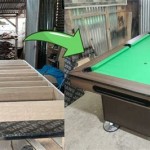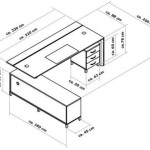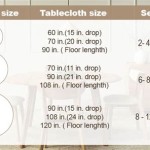Formal Table Setting for Lunch
A formal table setting for lunch, while less elaborate than a dinner setting, still adheres to specific guidelines and principles of etiquette. It reflects a commitment to hospitality and elevates the dining experience, showcasing attention to detail and respect for guests. Understanding the proper placement of each item ensures a visually appealing and functional arrangement, contributing to a more enjoyable and polished luncheon.
The primary difference between a formal lunch and a formal dinner setting lies in the number of courses anticipated and, consequently, the number of utensils and serving pieces required. Lunch typically involves fewer courses, leading to a more streamlined setup. However, the underlying principles of order and placement remain consistent.
This article details the elements of a formal lunch table setting, explaining the correct positioning of each component. It aims to provide a comprehensive guide for creating an elegant and functional lunch setting that aligns with established etiquette standards.
Key Point 1: The Core Components of a Formal Lunch Setting
The foundation of a formal lunch table begins with the careful placement of several key components. These items, primarily dishes and cutlery, are arranged according to a logical system that anticipates the order of courses and facilitates ease of use for the diner.
The
charger plate
, while optional for lunch, provides an underliner for the initial course. It is typically removed after the first course has been served. If utilized, it is centered in front of the chair.The
dinner plate
, if the charger plate is not used, is placed in the center of the setting, serving as the base for subsequent plates. In the absence of a charger, the initial course (soup or salad) is placed directly on the dinner plate.A
salad plate
orsoup bowl
, depending on the menu, is placed on top of the dinner plate or, if present, the charger plate. The choice between a plate or bowl depends on the first course being served.The
bread plate
is positioned to the upper left of the setting, above the forks. Abutter knife
is placed horizontally across the bread plate, with the blade facing inwards towards the diner. The butter knife may rest on the right side of the bread plate at an angle.The
napkin
is traditionally placed to the left of the forks or on the dinner plate, depending on the desired presentation. It may be folded in a decorative manner. If placed to the left, it should be situated just outside the outermost fork.The
forks
are placed to the left of the plate, with the outermost fork being used for the first course (usually salad) and the innermost fork for the main course. If a separate salad fork is not used, the dinner fork is placed closest to the plate.The
knife
is placed to the right of the plate, with the blade facing inwards towards the plate. If more than one knife is needed, the knife for the main course is placed closest to the plate, and the salad knife is placed to the right of it.The
spoons
are placed to the right of the knives. If soup is being served, the soup spoon is placed furthest to the right. If a dessert spoon is provided, it is usually placed above the plate, oriented horizontally with the bowl of the spoon facing left. Alternatively, it can be brought to the table with the dessert course.The
water glass
is placed just above the knife. Additional glasses, such as a wine glass or iced tea glass, are arranged to the right of the water glass, typically in descending order of size from left to right.Key Point 2: Utensil Placement and Usage
The placement of utensils is governed by the "outside-in" rule: diners begin with the outermost utensils and work their way inwards towards the plate as the courses progress. This system ensures that the correct utensil is readily available for each course.
The
salad fork
, being the outermost fork, is used for the salad course. It is typically smaller than the dinner fork. However, some formal settings may utilize a single fork for both salad and the main course, in which case the single fork occupies the innermost position.The
dinner fork
, positioned closest to the plate, is used for the main course. It is generally larger and more substantial than the salad fork, designed for handling heartier foods.The
salad knife
, if used, is placed to the right of the dinner knife. It is used for cutting salad ingredients that may be too large to manage with the fork alone.The
dinner knife
, placed closest to the plate on the right side, is used for the main course. Its sharp blade is designed for cutting meat and other substantial food items.The
soup spoon
, placed to the right of the knives, is used for consuming soup. It has a rounded bowl shape designed for scooping liquids.The
dessert spoon
orfork
, if placed above the plate, is used for dessert. Its placement indicates that it is specifically intended for the final course. If brought out with the dessert, it is presented alongside the dessert plate.The
butter knife
, placed on the bread plate, is used for spreading butter or other spreads onto bread or rolls. It is not used for cutting bread.The handling of utensils is governed by basic etiquette rules. Utensils should be held with a comfortable grip, and food should be brought to the mouth rather than the mouth reaching for the food. When not in use, utensils should be rested on the plate, not on the table. At the end of the meal, utensils should be placed parallel to each other, angled slightly to the right, to signal that the diner has finished.
Key Point 3: Linens, Centerpieces, and Additional Touches
Beyond the fundamental elements of dishes and cutlery, several additional components contribute to the overall ambiance and formality of a lunch setting. These include linens, centerpieces, and other decorative touches that enhance the visual appeal and create a welcoming atmosphere.
The
tablecloth
is a crucial element, providing a clean and elegant backdrop for the meal. It should be properly ironed and draped evenly over the table, with an appropriate overhang on all sides. The choice of fabric and color will depend on the occasion and the desired level of formality. White or ivory tablecloths are traditionally considered the most formal options.The
napkins
are typically made of linen or a high-quality cotton blend. They should be neatly folded and placed to the left of the forks, or on the dinner plate if desired. Elaborate folds are sometimes used for decorative purposes, but a simple and elegant fold is generally preferred for a formal setting.A
centerpiece
can add visual interest and elegance to the table. However, it should be carefully chosen to avoid obstructing the view of guests or interfering with conversation. A low floral arrangement, a collection of candles, or a single striking object can serve as an effective centerpiece. The height of the centerpiece should not exceed 12 inches to allow for unobstructed conversation.Place cards
are used to indicate seating arrangements and add a personal touch to the table. They are typically placed above the plate or on the napkin. The font and style of the place cards should be consistent with the overall aesthetic of the setting.Candles
can create a warm and inviting atmosphere, particularly for a luncheon that extends into the late afternoon. They should be placed in appropriate holders and lit shortly before guests are seated. Scented candles should be avoided, as they can interfere with the aroma of the food.Small
favors
orgifts
may be placed at each setting as a gesture of appreciation for the guests. These should be carefully chosen to reflect the occasion and the host's personal style. They should be discreet and not interfere with the functionality of the table setting.The overall goal is to create a setting that is both visually appealing and functional. The placement of each item should be deliberate and purposeful, contributing to a seamless and enjoyable dining experience. A well-executed formal lunch table setting demonstrates attention to detail and a commitment to hospitality, leaving a lasting impression on guests.
Consideration should also be given to the spacing between place settings. Adequate space allows guests to comfortably use their utensils and engage in conversation without feeling crowded. A minimum of 24 inches between place settings is generally recommended.
Ultimately, a formal lunch table setting is a reflection of the host's attention to detail and commitment to creating a memorable dining experience. By adhering to established etiquette guidelines and paying careful attention to the placement of each element, it is possible to create a setting that is both elegant and functional, enhancing the enjoyment of the meal for all those in attendance.

Proper Table Setting 101 Everything You Need To Know Emily Post

Table Settings Guide How To Set A For Diffe Occasions

Table Settings Guide How To Set A For Diffe Occasions

How To Set Table For Formal Lunch

Free Table Setting Template For 2025 Set A Perfect

Proper Table Setting 101 Everything You Need To Know Emily Post

Table Settings Guide How To Set A For Diffe Occasions

Dining Etiquette Career Exploration Development Kent State University

How To Set A Table

Good To Know How Set An Informal And Formal Table








